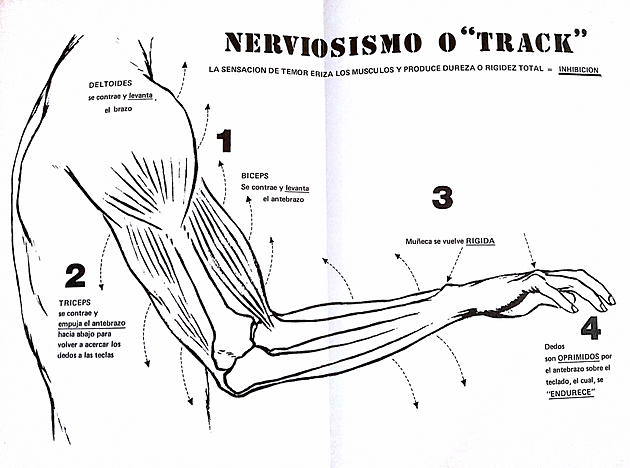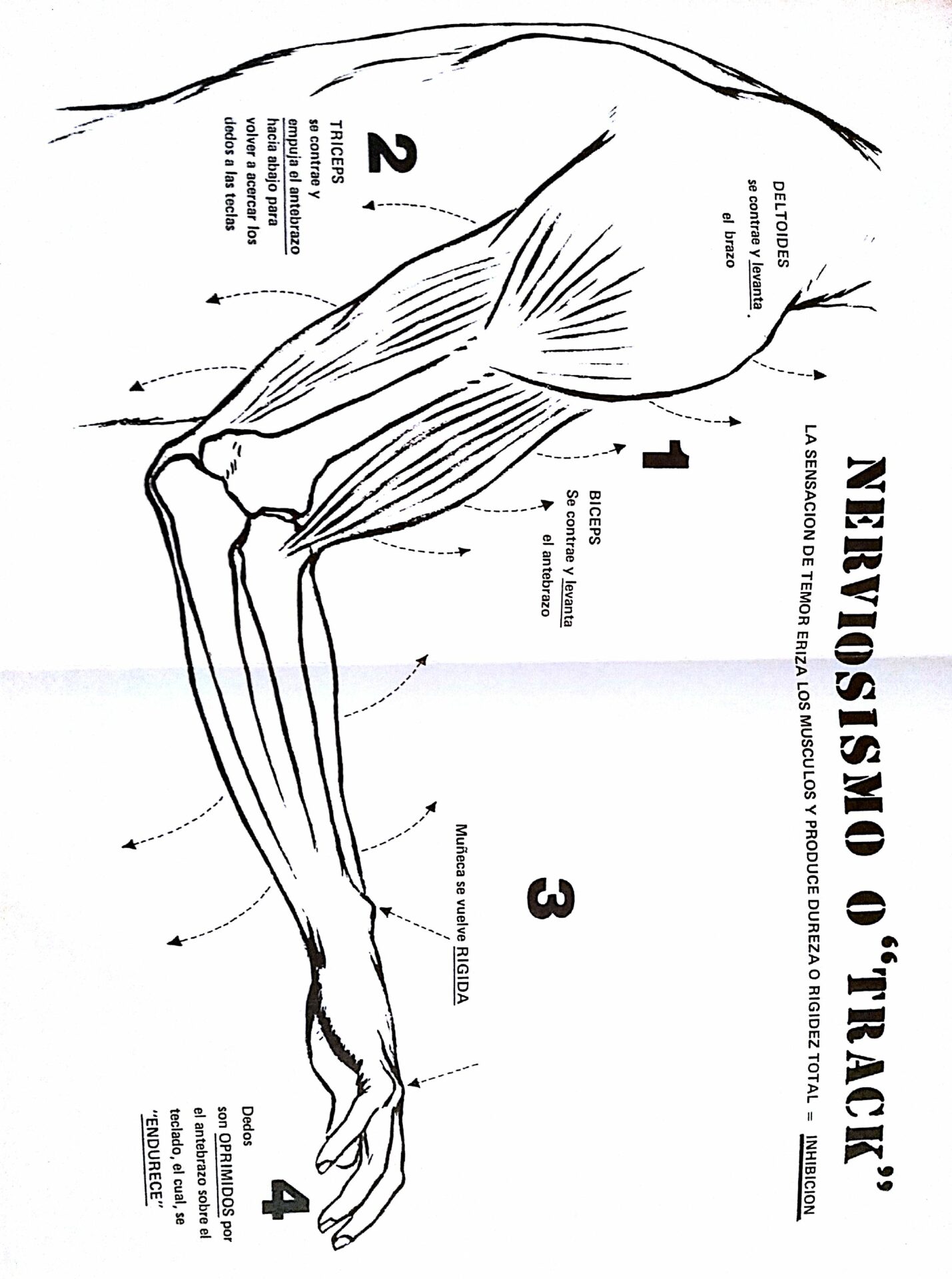“Escence of the pianistic execution”, according to Vicente Scaramuzza. Ch. 1 S. 1
T

The ancient Italian piano masters summarized this art in few words: “Dita d’acciaio, braccia di cotone” (iron fingers and cotton arms – Scaramuzza quoted). In spite of the fact that is a fairly clear empiric description of the act of performing I certainly do not believe this is enough to explain how to play the piano.
I consider far more appropriate to say that the foundations of the pianistic art are based on the total, complete and absolute relaxation of all the muscles not directly involved in the act of playing so the ones that are can easily perform. This is to say: to relax the arm and the fore-arm so they give full freedom to the hand and the fingers.
What we try to point out is that, by being totally relaxed and having their weight in opposition to the action of the fingers and palm , the arm and forearm become the main piece in this performance mechanism. Therefore it is said: “It is the arm that plays through the carpus and the metacarpus and not the fingers”. Obviously this statement can’t possibly be proven but what it does is to show us the art of performing the piano is always ruled by sensations. The principle of relaxation is invariable.
The first and paramount sensation we need to acknowledge is the total relaxation of our arms, forearms, hands and fingers. (The real pianistic relaxation starts when we believe we are totally relaxed. During our life we will realise we can keep on relaxing more and more). Piano teachers should focus on showing piano students how to improve this relaxation skill.
The second sensation, when you are already about to play sitting straight but loose with the head up, will be the hand that hangs from the arm. It will be always located inside the keyboard with fingers 2,3,4,5 close to the wooden edge where the piano keys end.
The fingers that don’t play will be kept up, ready to perform (on duty), so they can attack from above the surface of the keys (without hitting them) while they do not need to be reset again at the moment of playing.
While on the learning process it will be necessary to exceed the finger articulation so that when we perform in the real situation we do it naturally.
(continues…)



